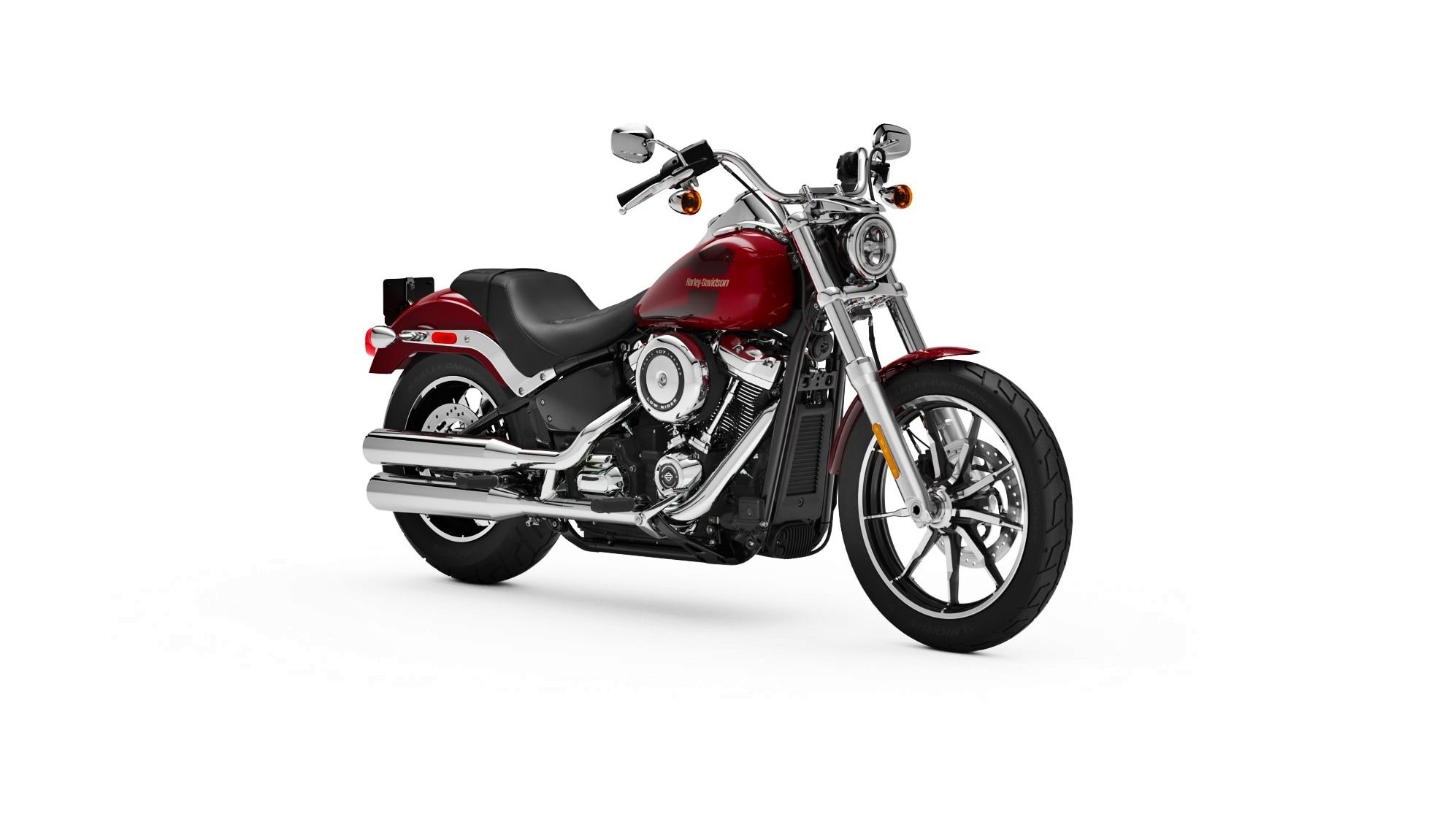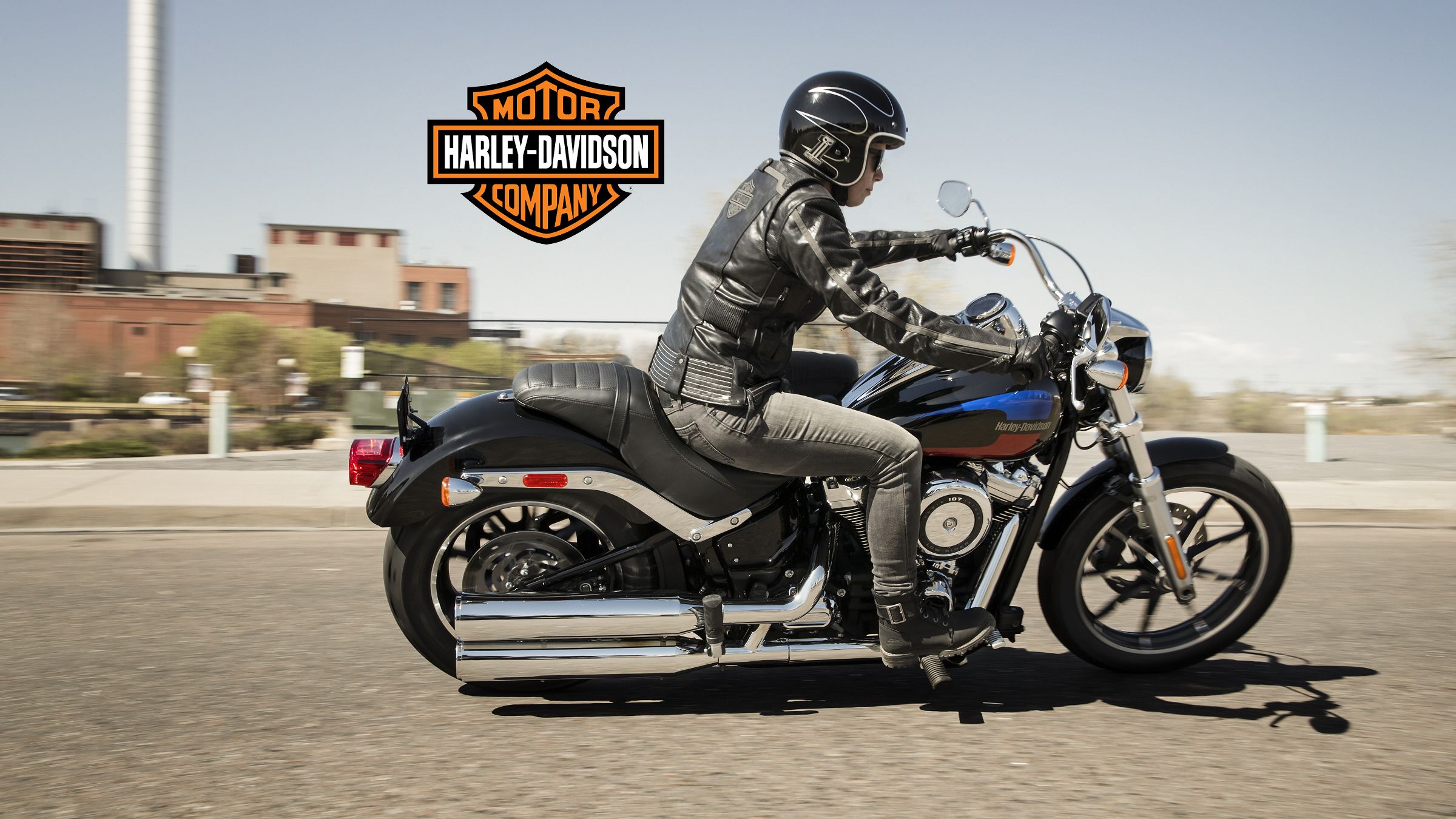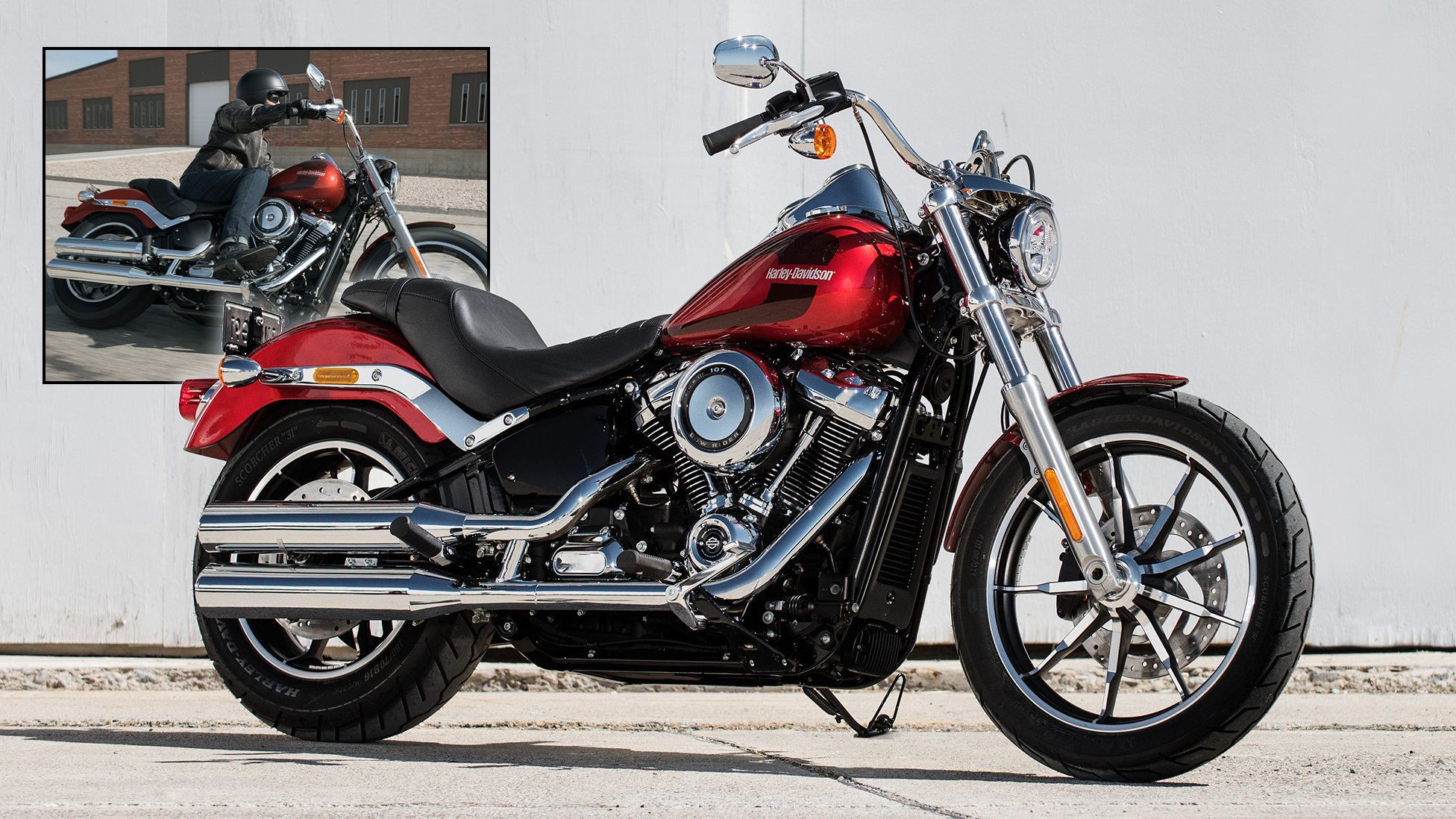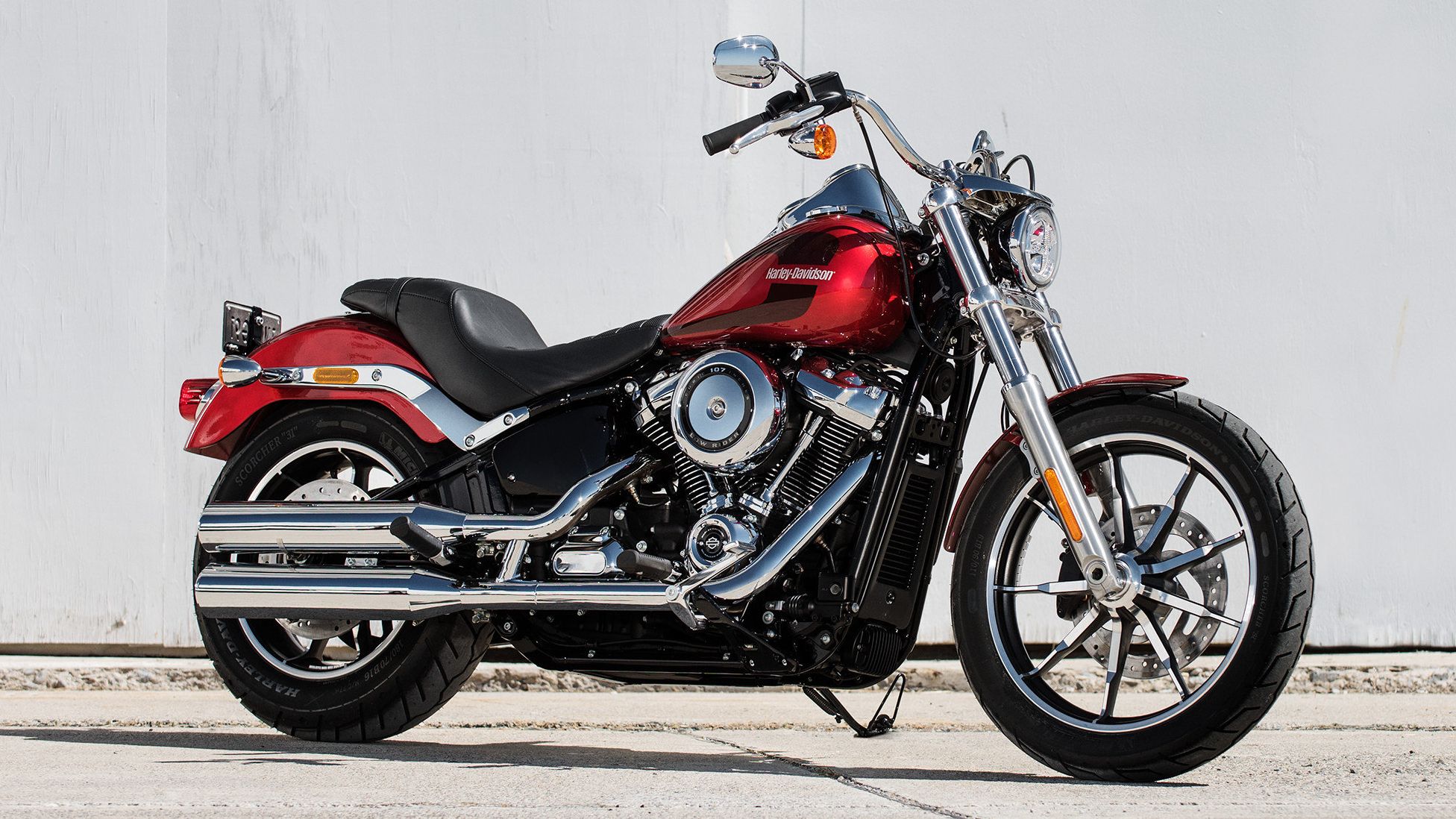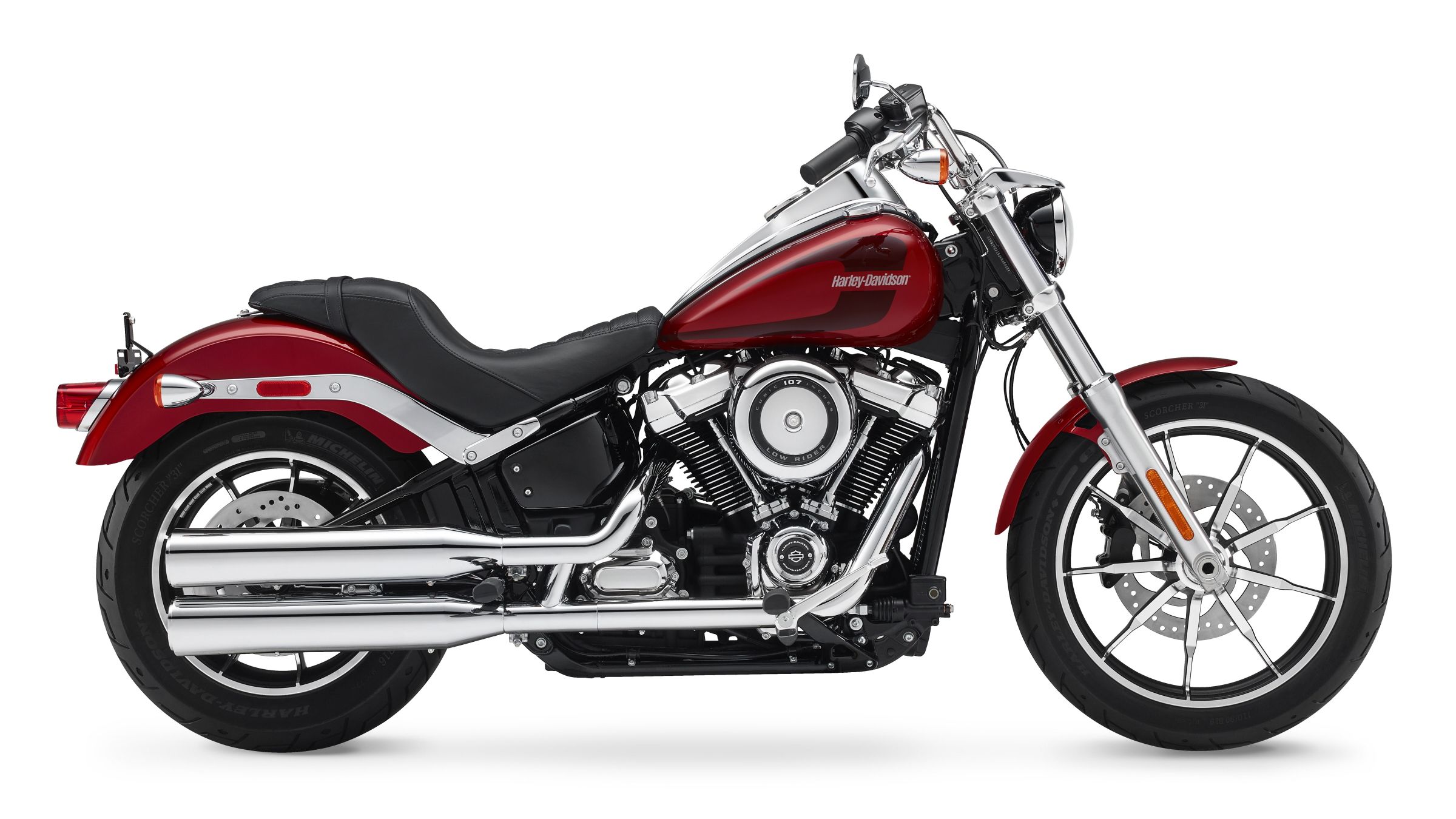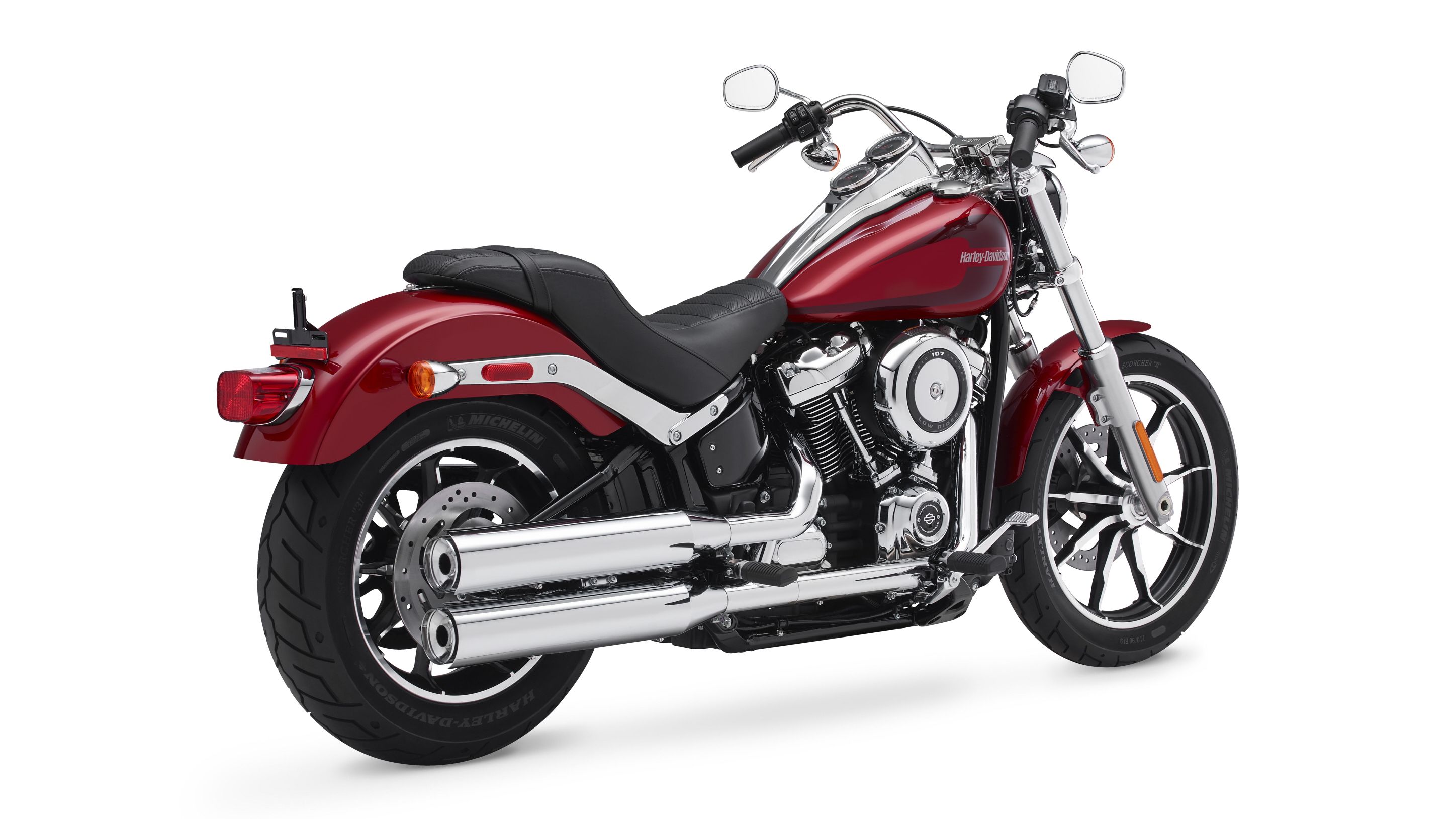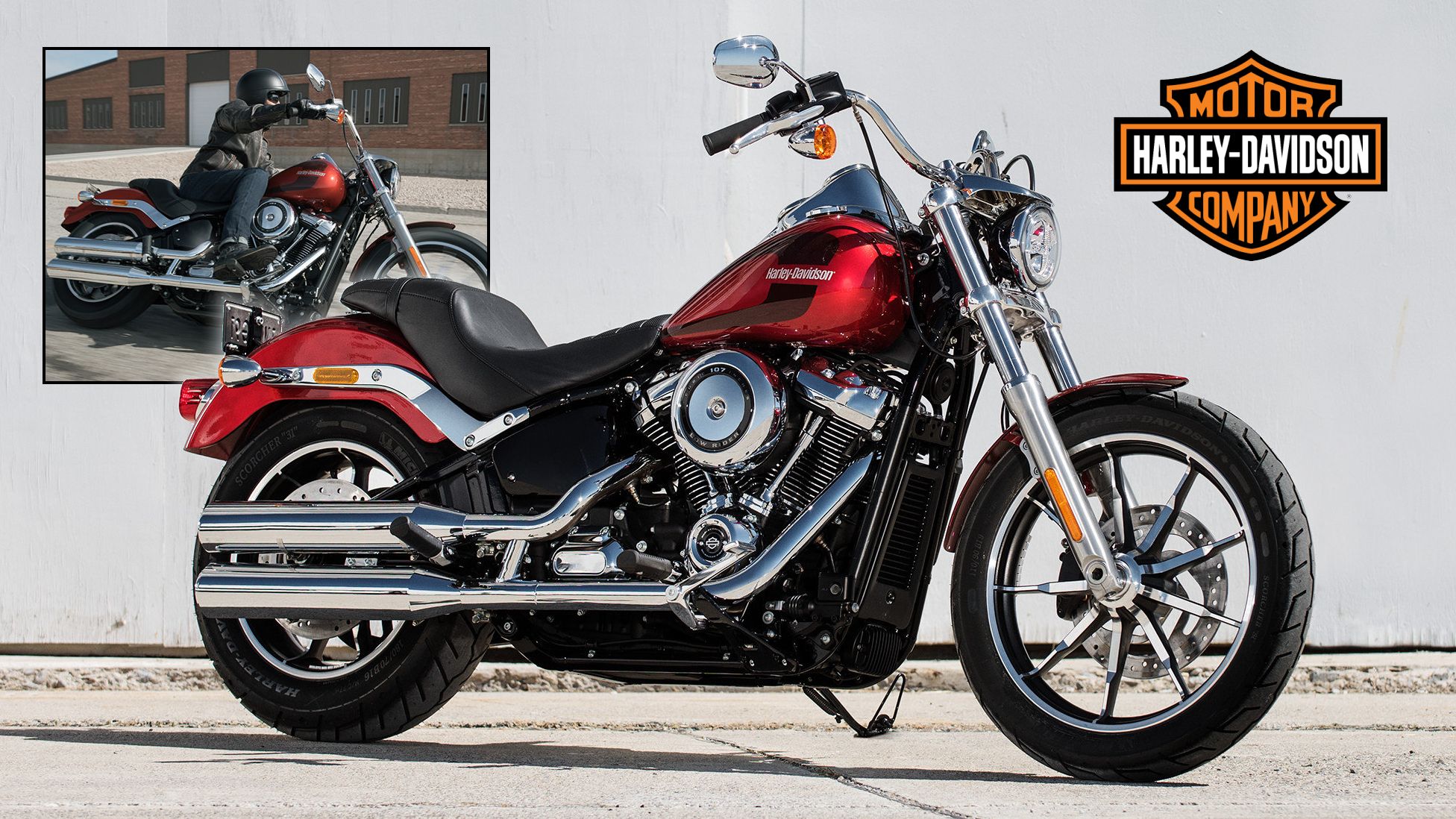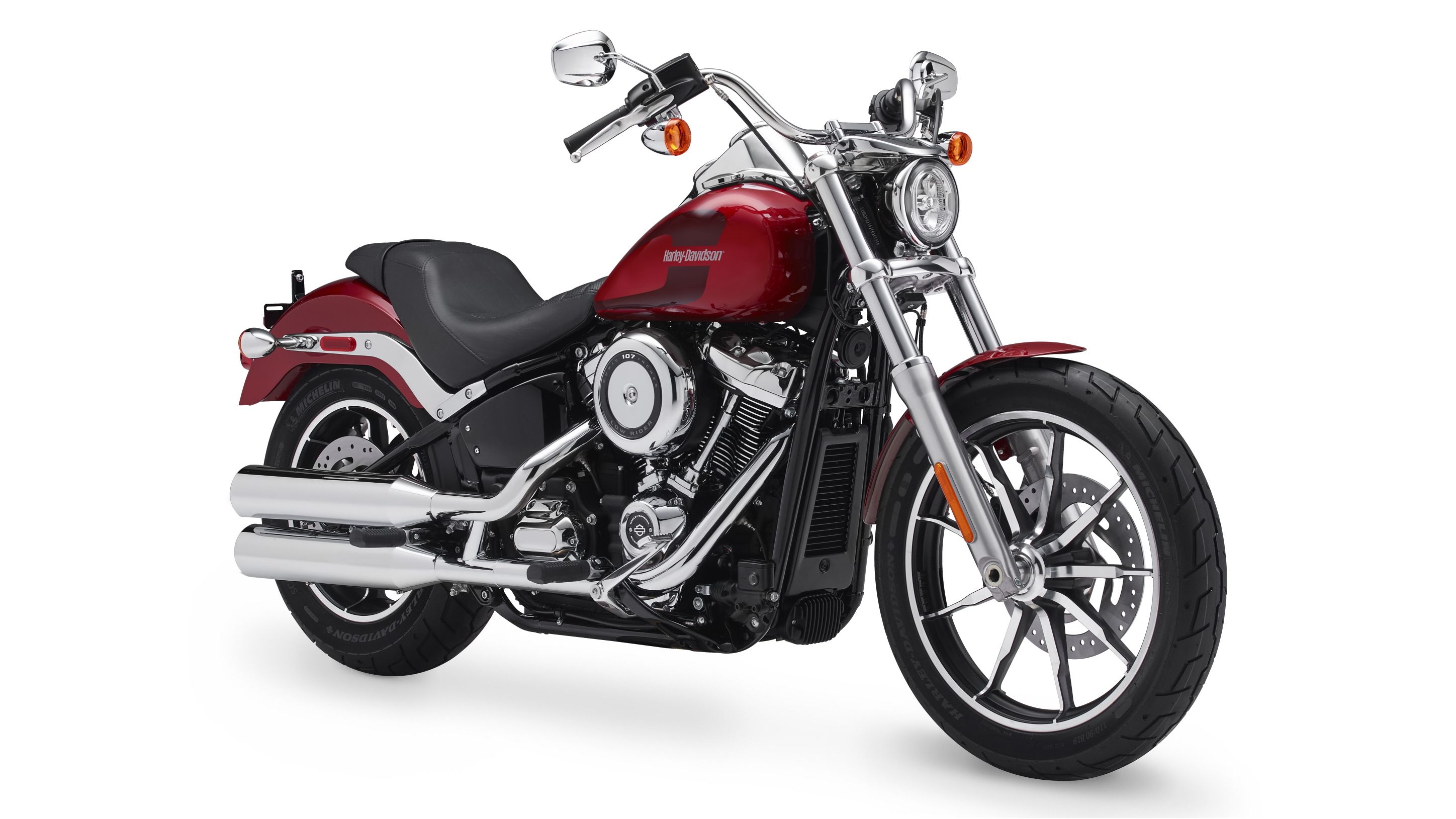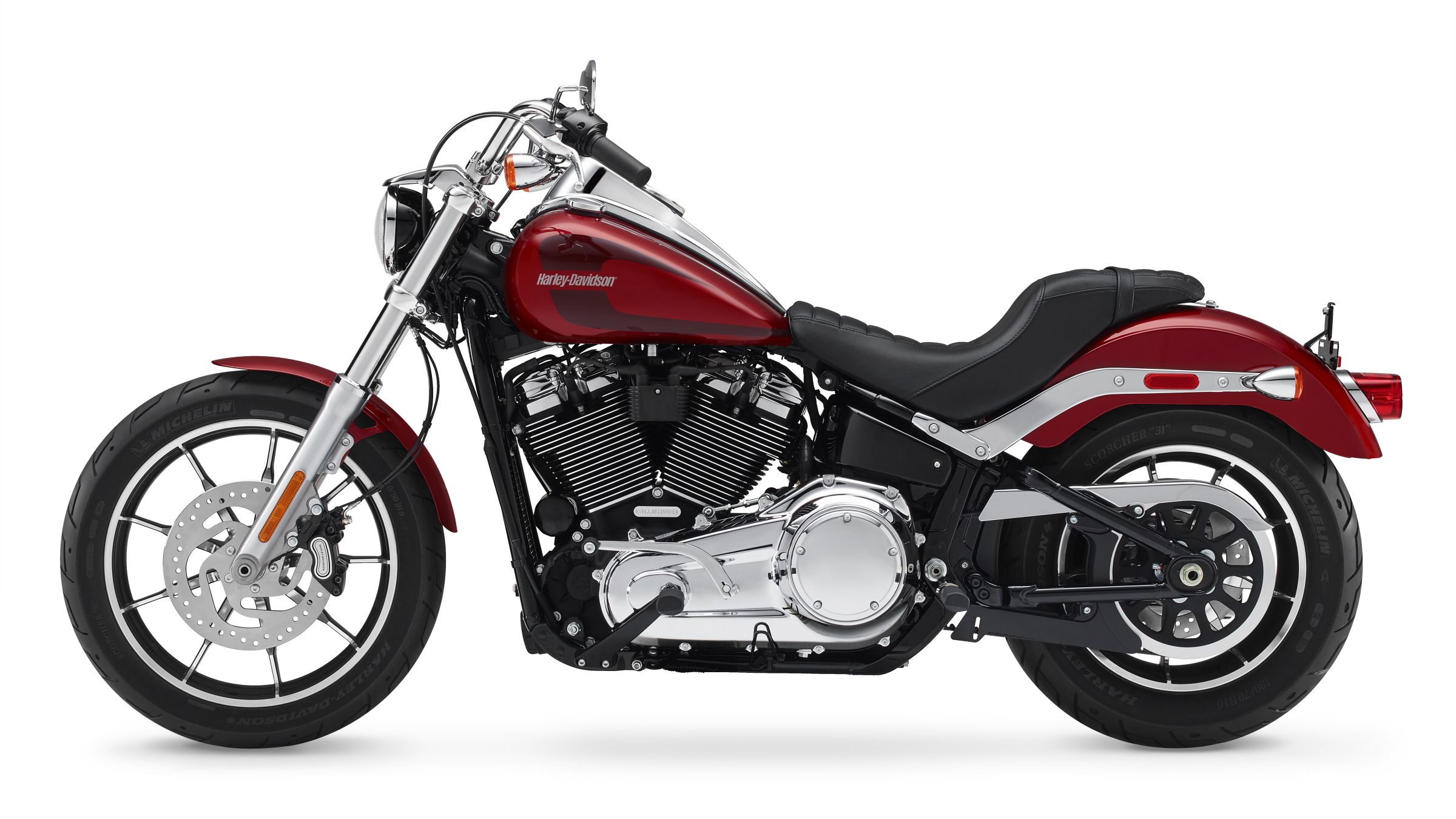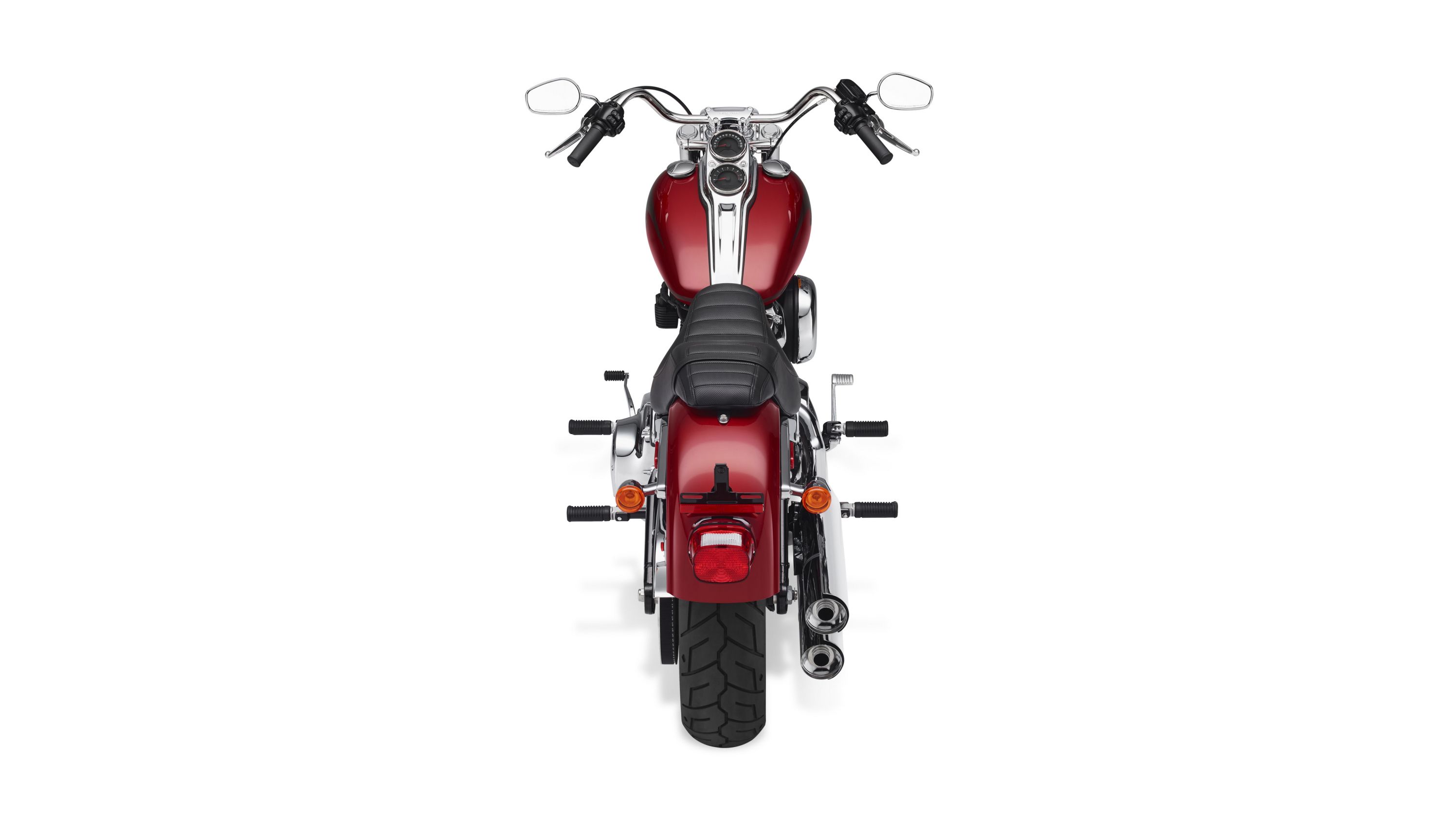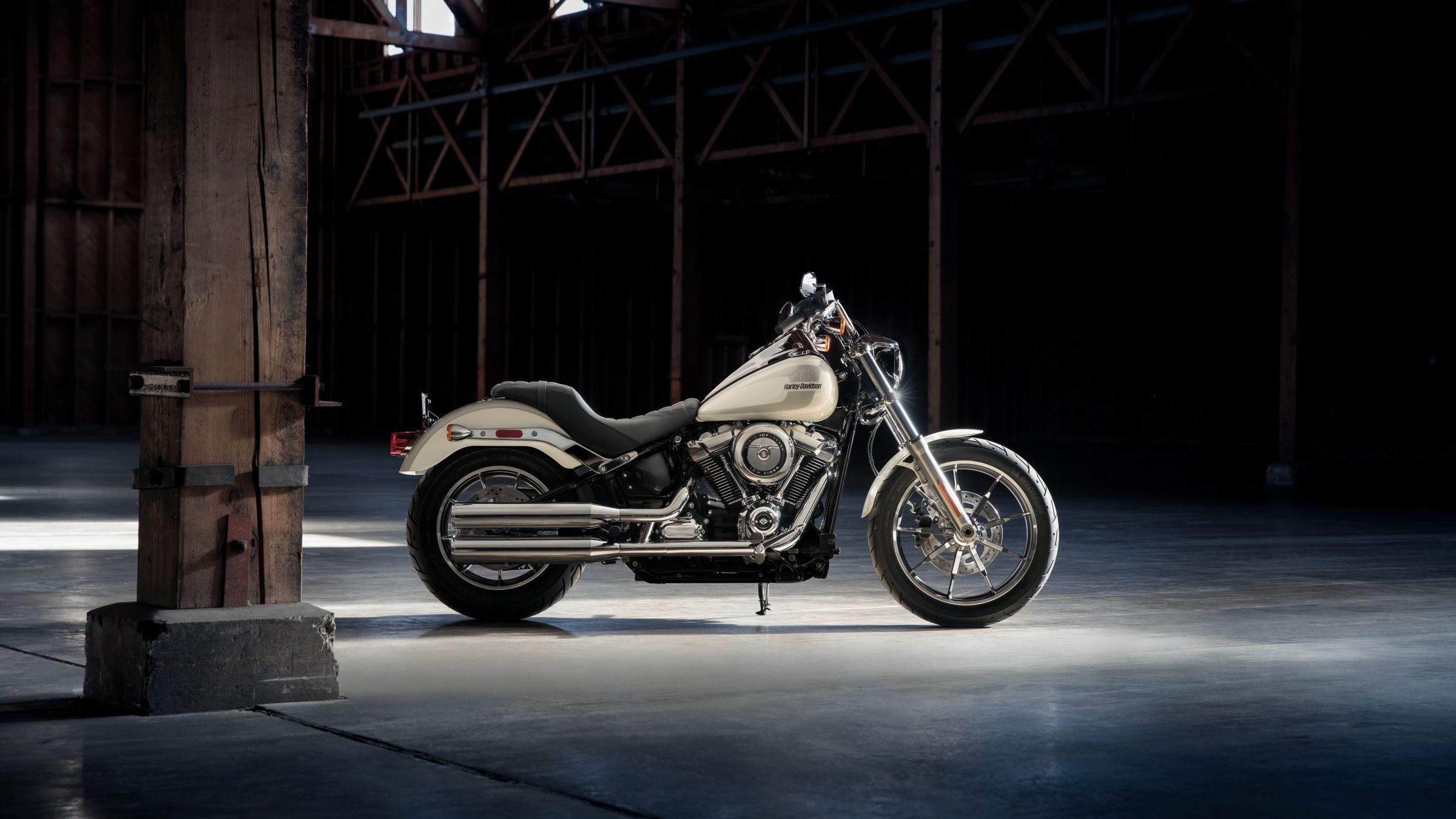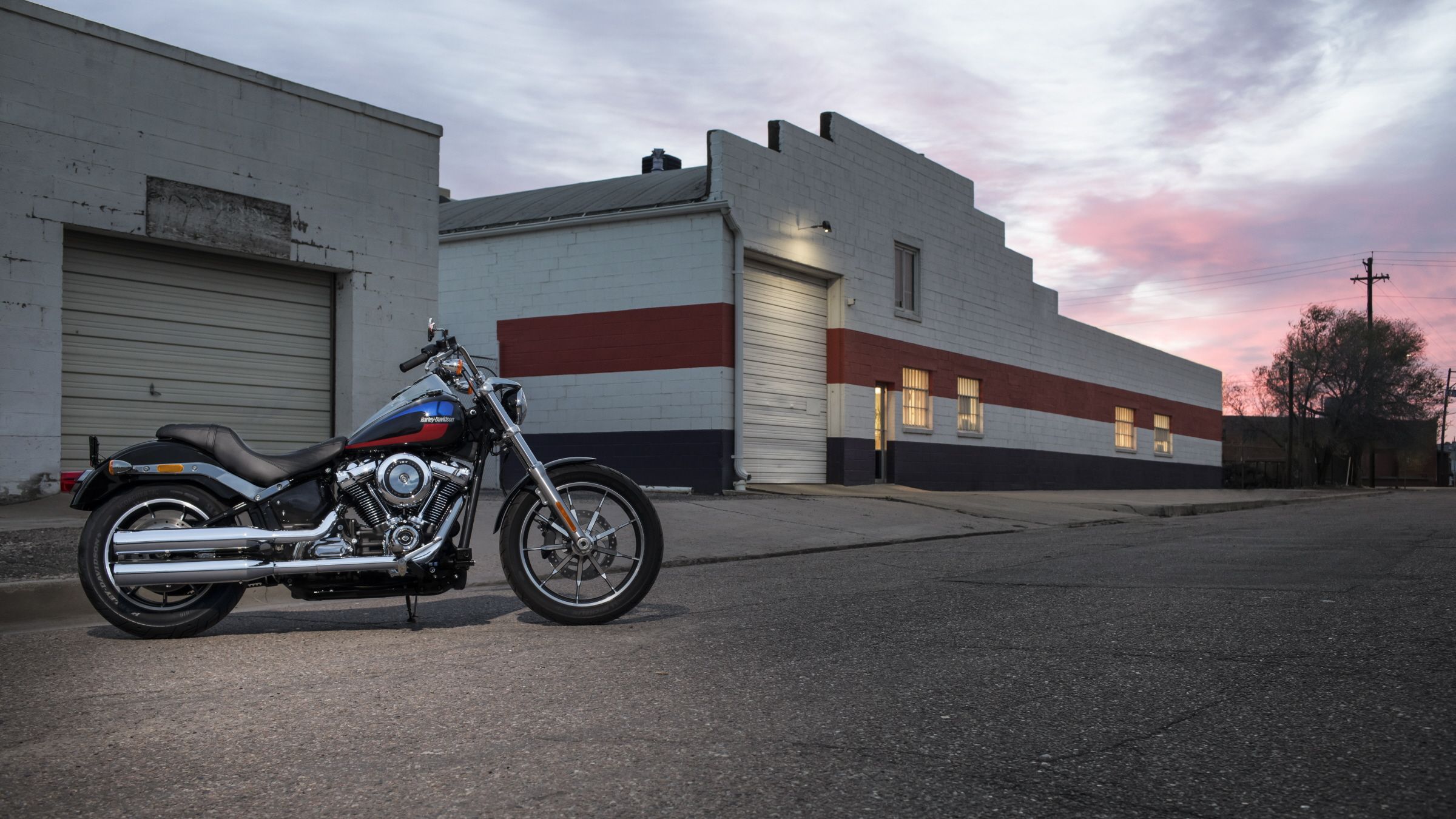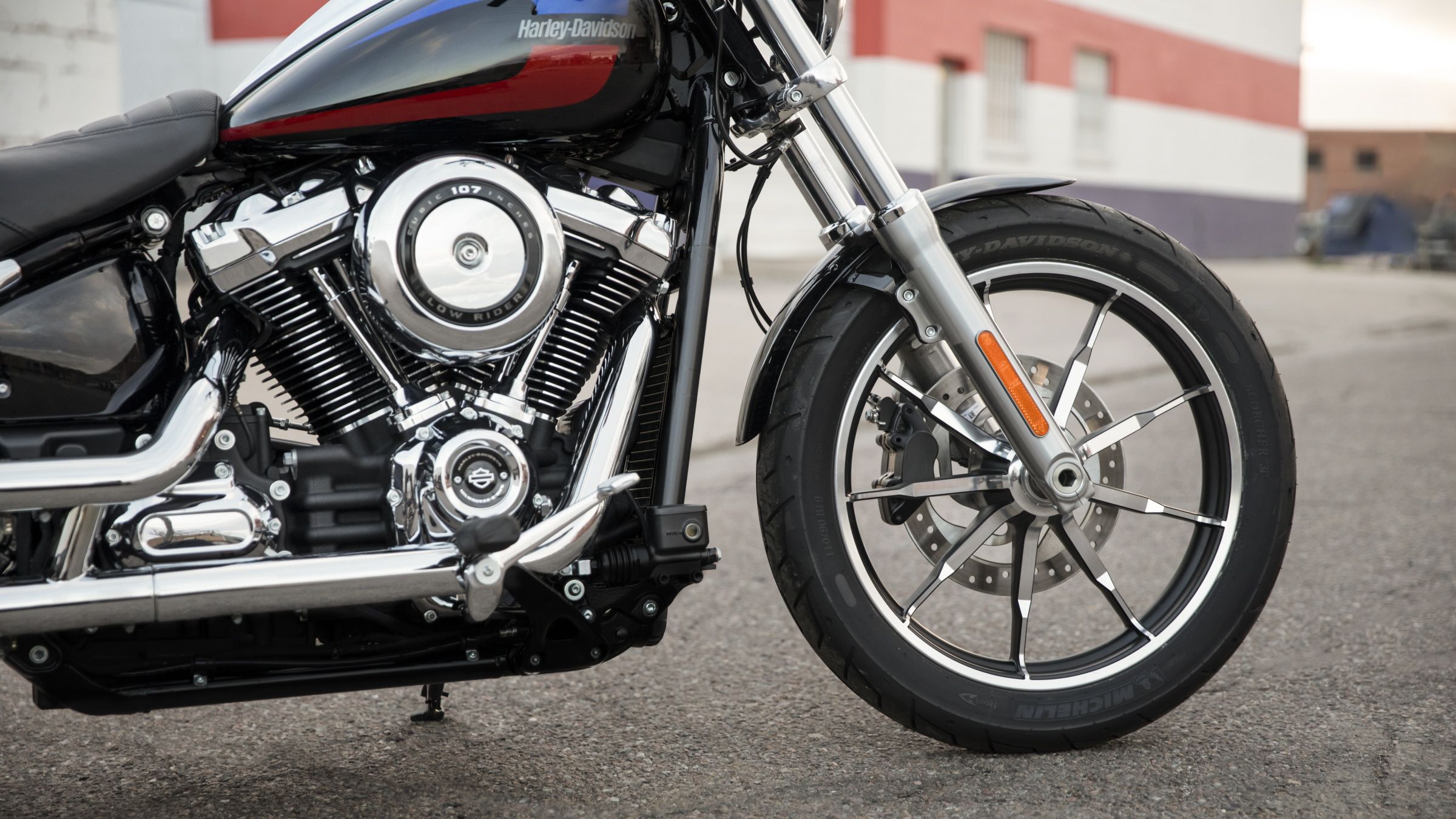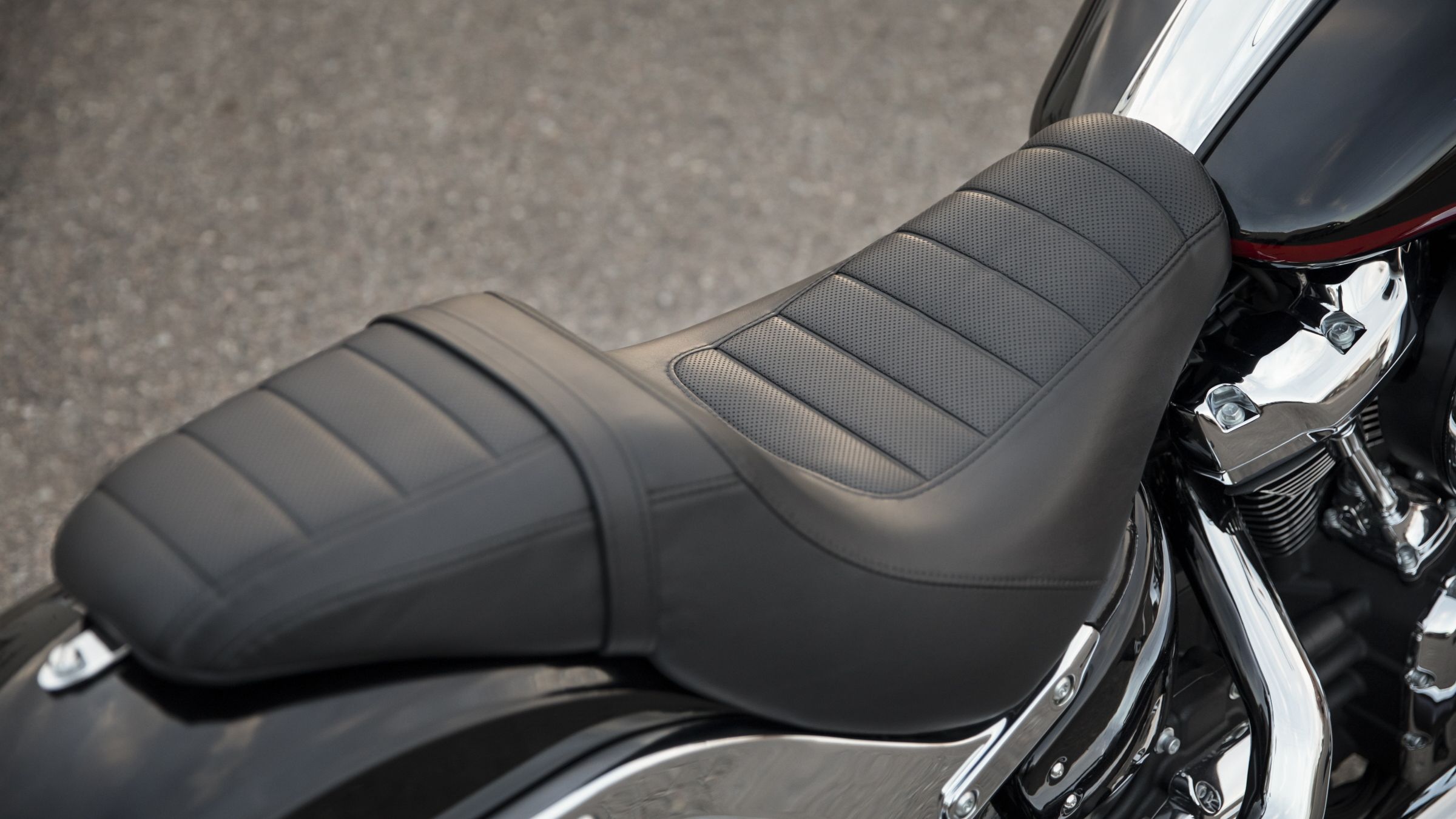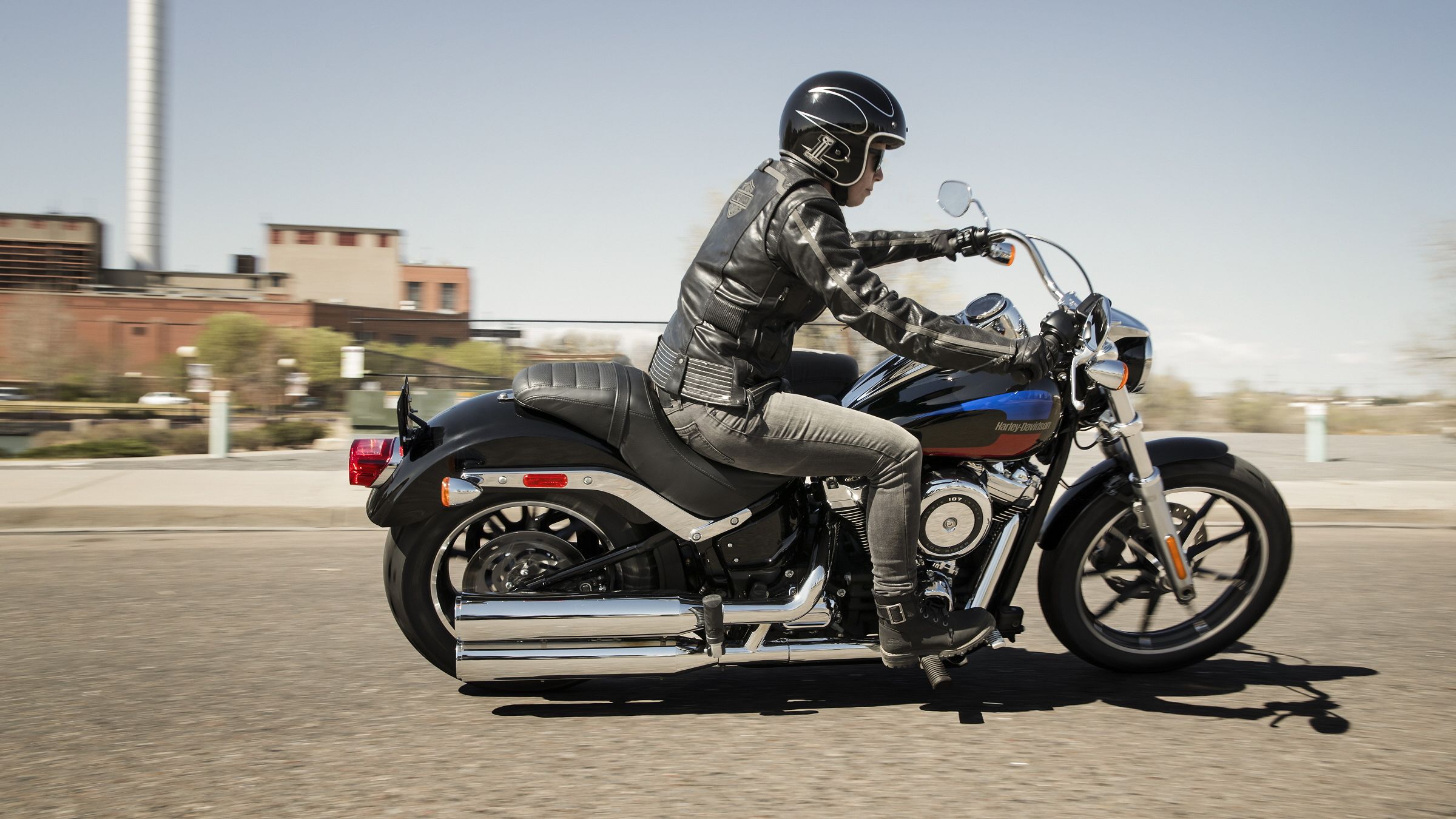Powered by the Milwaukee-Eight engine with a total of 110 pound-feet of torque, the agile Softail frame brings heretofore unseen performance to the Low Rider. Harley-Davidson is digging deep to give us better handling and more power and the Low Rider is a prime example.
2018 - 2020 Harley-Davidson Low Rider
- Make: Array
- Model: 2018 - 2020 Harley-Davidson Low Rider
- Engine/Motor: Milwaukee-Eight 107
Harley-Davidson Low Rider Design
The blade with which Harley-Davidson streamlined its cruiser lineup cut deep and wide with an entire branch pruned from the family tree in 2017 with the Dyna finding itself relegated to the history books. That's right, we lost the successor to the FXR family, and have only the Softail lineup for cruiser work.
They may call it a “Low Rider,” but it doesn't necessarily follow that it is, in fact, the lowest Softail, 'cause it ain't. Seat height measures out at 27.2-inches high unladen, and a 180-pound rider should make the rear suspension squat another inch. Ground clearance measures out at 5.1 inches high, and just to give you perspective, the Softail Deluxe runs with only 4.5 inches of ground clearance with a 0.4-inch lower seat height. Once you get past that and really look at the thing, the tie-ins to the original from back in the '70s become apparent in the tank graphics and twin-clock, tank-mount instrument panel. The saddle seems to tie in as well, though I can't exactly qualify that impression. Maybe it's the look of the segmented panel or the squared-off corners, but it has a certain nostalgia about it for sure.
A mid-size front fender sets the tone right off the bat with an old-school brow over the cyclops headlight. It's clean and slightly custom, but not too much so. Buckhorn pullback bars put the hands near shoulder height and are wide set for plenty of leverage, but the foot controls are a curious thing. Not quite as far forward as a proper set of forward controls and not as far back as mid-mounts, the pegs are placed in a comfortable middle ground for what seems to be a good compromise between the two traditional positions. Sure, you're still in the classic cruiser windsock position, but at least your legs aren't fully stretched out ahead of you feet first, 'cause that can be less than confidence-inspiring on the highway.
The stock seat has a tapered, Mustang-style pillion pad that seems to say “yeah, you can ride with me, but I'd rather you didn't.” Truth to tell, it's a nice touch that works well with the overall look if you ask me. As ever, the frame geometry mimics that of the old hardtails, all the way down to the triangular swingarm that really sells the illusion.
Harley-Davidson Low Rider Chassis
The factory gave the Softail frame a complete rebuild for this new generation. Let's face it; the Softail family was never particularly known for its handling or performance. It has relied on its looks alone for decades, and while those looks were enough when Softails were a novel new thing, those years are far in the rear-view mirror at this point. Looking cool just isn't enough anymore. People want more performance, and since H-D is scrambling to gain a foothold with the tech-native Millennial buyers, I think the factory is finally responding to the calls for better handling and power.
Although the Low Rider comes with more agility and cornering ability, the steering geometry gives it solid tracking with a 30-degree rake and 6.4-inch trail that should make for relatively effortless cruising. The new frame dropped a whopping 50-percent of its components for an overall lighter build with greater strength and flexibility in all the right places, and this is from whence the newfound agility springs. Speaking of springs, the front forks come with the swanky Dual Bending Valve technology we see on the tour bikes and that somewhat makes up for the lack of adjustability. The adjustable rear monoshock moves from beneath the transmission to up beneath the seat where it's equally inconspicuous, but much easier to get to without the dubious benefits of dirty knees.
A single disc and four-pot anchor slows the front wheel with a twin-pot caliper to bind the rear, and you can get the brakes as vanilla as the suspension, or you can spring for the $795 ABS option for that extra safety net.
|
Frame: |
Mild steel, tubular frame; rectangular section backbone; stamped, cast, and forged junctions; MIG welded; aluminum forged fender supports |
|
Swingarm: |
Mild steel, tubular sections, stamped x-member, forged axle junctions; MIG |
|
welded; removable belt spacer |
|
|
Front Forks: |
Dual-bending valve 49 mm telescopic with aluminum fork triple clamps; dual rate spring |
|
Rear Shocks: |
Hidden, free piston, coil-over monoshock; 43 mm stroke; cam-style preload adjustment |
|
Rake (steering head): |
30° |
|
Fork Angle: |
30° |
|
Trail: |
6.4 in. (163 mm) |
|
Lean Angle Right/Left (per J1168): |
29.6°/29.6° |
|
Suspension Travel: |
Front Wheel: 5.1 in. (130 mm), Rear Wheel: 3.4 in. (86 mm) |
|
Wheels: |
Black, Machine Highlighted, Radiate Cast Aluminum |
|
Wheel, Front: |
19 in. x 2.5 in. (483 mm x 64 mm) |
|
Wheel, Rear: |
16 in. x 5 in. (406 mm x 127 mm) |
|
Tires: |
Michelin® Scorcher® “31” |
|
Tire, Front: |
110/90B19,62H,BW |
|
Tire, Rear: |
180/70B16,77H,BW |
|
Brakes, Front: |
11.8 in. x .2 in. (300 mm x 5.1 mm) solid, uniform expansion rotors; 4-piston fixed caliper |
|
Brakes, Rear: |
11.5 in. x .23 in. (292 mm x 5.8 mm) solid, uniform expansion rotors; 2-piston floating rear caliper |
|
Anti-Lock Braking System: |
Optional |
Harley-Davidson Low Rider Drivetrain
Unlike some of its kin, the Low Rider comes with just the Milwaukee-Eight 107 with no 114-inch version on the table just yet. This mill made its debut in 2017 in the touring lineup, and in 2018 it moved into the cruisers to completely phase out the Twin Cam. The Mil-8 carries itself in the same 45-degree V-Twin layout we've seen from the factory for over a century now with a 100 mm bore and 111 mm stroke that gives us the 1,753 cc total displacement and 10-to-1 compression ratio. The Mil-8 107 cranks out 110 pound-feet of torque at a low 3,000 rpm for some real stump-pulling power that'll help it haul its 661-pound (wet) bulk out of the hole when the light turns green.
With the return to the single-cam valvetrain, the factory also restored the shape of the nosecone area to something more aesthetically pleasing than the Twin-Cam gearcase, thank goodness. It also brought back the old familiar pushrod-tube geometry that uses four external pushrods to actuate the four-valve heads for a total of 8 poppets, hence the “Eight” in the ingeniously-clever engine name. Electronic fuel injection runs with a good-old, pull-open/pull-closed dual-cable throttle, and the gadgetry helps the engine milk an average of 47 miles out of every gallon, but does little else.
As usual, the engine management is plain vanilla with nothing in the way of traction control or variable power-delivery modes, so H-D persists in its dead-last position as far as top-end engine wizardry is concerned since Indian got on-board with rider modes and rear-cylinder deactivation last year. Harley has introduced some new electronic wizardry in the trikes that includes traction control, so let's hope for some trickle-down.
|
Engine: |
Milwaukee-Eight® 107, Pushrod-operated, overhead valves with hydraulic, self-adjusting lifters; four valves per cylinder |
|
Bore x Stroke: |
3.937 in. x 4.375 in. (100 mm x 111 mm) |
|
Displacement: |
107 cu. in. (1,746 cc) |
|
Compression: |
Ratio 10.0:1 |
|
Engine Torque (per J1349) (North America): |
110 lb-ft @ 3,000 rpm (149 Nm @ 3,000 rpm) |
|
Fuel System: |
Electronic Sequential Port Fuel Injection (ESPFI) |
|
Exhaust: |
2-into-2 shotgun; catalyst in muffler |
|
Lubrication System: |
Pressurized, dry-sump with oil cooler |
|
Primary Drive: |
Chain, 34/46 ratio |
|
Final Drive: |
Belt, 32/66 ratio |
|
Clutch: |
Mechanical, 10 plate wet, assist & conventional |
|
Transmission: |
6-Speed Cruise Drive® |
|
Gear Ratios (overall) (U.S.): |
1st: 9.311, 2nd: 6.454, 3rd: 4.793, 4th: 3.882, 5th: 3.307, 6th: 2.79 |
Harley-Davidson Low Rider Price
There are three things in life that you can count on; death, taxes, and a set of Vivid Black sheet metal for nearly every Harley in the world. The factory offers the Low Rider with its usual tiered pricing, and the black model takes up its usual place at the bottom with a $14,899 price tag. For another $400, you can score the LR in Billiard Blue, Billiard Red, or Stone Washed White Pearl for 2020.
|
Model ID: |
FXLR |
|
Warranty: |
24 months (unlimited mileage) |
|
Standard Equipped: |
Security System Option |
|
Colors: |
|
|
└ 2018: |
Vivid Black, Wicked Red, Electric Blue, Bonneville Salt Pearl |
|
└ 2019: |
Vivid Black, Twisted Cherry, Midnight Blue, Barracuda Silver |
|
└ 2020 |
Vivid Black, Billiard Blue, Billiard Red, Stone Washed White Pearl |
|
Price: |
|
|
└ 2018 |
Vivid Black: $14,999, Color: $15,399 |
|
└ 2019: |
Vivid Black: $15,049, Color: $15,449 |
|
└ 2020: |
Vivid Black: $14,899, Color: $15,299 |
Harley-Davidson Low Rider Competitor
With such classic American looks to compete against, I had to find something of the same ilk -- if not the same era – and the Indian Chief Dark Horse looks to me like it would appeal to the same sort of buyer, so let's get to it.
Indian Chief Dark Horse
Instead of looking to the 70s, Indian went much further back in time for its inspiration for the “CDH.” Forties-ish maybe? Whatever the case, the iconic war bonnet fender ornament gets the party started, and the full fender, fork skirts, and headlight nacelle ties right into Indian's rich history.
The blackout treatment dominates the palette. In fact, this Indian is kind of like the old Fords; you can get it in any color you want, as long as you want black-on-black. That adds the custom culture to the CDH's pedigree. A solo seat and fully paneled rear end finish the machine off just like it started; rooted in history.
Both rides rock dual front brakes and ABS, but Indian alone includes it with the standard equipment package whereas H-D's ABS comes with an 8-bill price bump. Suspension on the CDH is pure vanilla, so Indian gains nothing here though it picks up a few inches (no giggity) in the engine displacement with a total of 111 inches versus 107 in the Mil-8 engine. That doesn't bear out in the power figures though; H-D claims 110 pound-feet at the shaft, but the Thunder Stroke bumps that up to 119 pounds o' grunt for a slight edge in torque. Neither of these builders are in the business of using price as a selling point, and Indian actually outprices H-D by a significant amount with a $18,499 sticker.
Read our full review of the Indian Chief Dark Horse.
He Said
“I like it alright enough I suppose, but I'm still waiting for my favorite Dyna of all (Wide Glide) to make the transition. Still, I'm glad Harley is preserving the Low Rider name and spirit while it looks to the future and tries to draw in another generation of riders. As for me, it's just a little weird seeing a Softail under a Low Rider banner. Is it just me?”
She Said
My wife and fellow motorcycle writer, Allyn Hinton, says, "Some specs I was made privy to, though I didn't test them myself, was that the new engine is 10 percent faster 0-60 mph than the previous year's engine, and it is 13 percent faster 60-80 mph. I didn't put that to the test, but you can definitely feel the difference pulling away from a light or kickin' it up to make a pass on the highway. If you've ridden a Low Rider in the past and weren't impressed, now is the time to try it again."
Harley-Davidson Low Rider Specifications
|
Engine & Drivetrain:: |
|
|
Engine: |
Milwaukee-Eight® 107, Pushrod-operated, overhead valves with hydraulic, self-adjusting lifters; four valves per cylinder |
|
Bore x Stroke: |
3.937 in. x 4.375 in. (100 mm x 111 mm) |
|
Displacement: |
107 cu. in. (1,746 cc) |
|
Compression: |
Ratio 10.0:1 |
|
Engine Torque (per J1349) (North America): |
110 lb-ft @ 3,000 rpm (149 Nm @ 3,000 rpm) |
|
Fuel System: |
Electronic Sequential Port Fuel Injection (ESPFI) |
|
Air Cleaner: |
8.5 in. round, center bolt cover with washable fiberglass filter media |
|
Exhaust: |
2-into-2 shotgun; catalyst in muffler |
|
Lubrication System: |
Pressurized, dry-sump with oil cooler |
|
Primary Drive: |
Chain, 34/46 ratio |
|
Final Drive: |
Belt, 32/66 ratio |
|
Clutch: |
Mechanical, 10 plate wet, assist & conventional |
|
Transmission: |
6-Speed Cruise Drive® |
|
Gear Ratios (overall) (U.S.): |
1st: 9.311, 2nd: 6.454, 3rd: 4.793, 4th: 3.882, 5th: 3.307, 6th: 2.79 |
|
Chassis: |
|
|
Frame: |
Mild steel, tubular frame; rectangular section backbone; stamped, cast, and forged junctions; |
|
MIG welded; aluminum forged fender supports |
|
|
Swingarm: |
Mild steel, tubular sections, stamped x-member, forged axle junctions; MIG |
|
welded; removable belt spacer |
|
|
Front Forks: |
Dual-bending valve 49 mm telescopic with aluminum fork triple clamps; dual rate spring |
|
Rear Shocks: |
Hidden, free piston, coil-over monoshock; 43 mm stroke; cam-style preload adjustment |
|
Rake (steering head): |
30° |
|
Fork Angle: |
30° |
|
Trail: |
6.4 in. (163 mm) |
|
Lean Angle Right/Left (per J1168): |
29.6°/29.6° |
|
Suspension Travel: |
Front Wheel: 5.1 in. (130 mm), Rear Wheel: 3.4 in. (86 mm) |
|
Wheels: |
Black, Machine Highlighted, Radiate Cast Aluminum |
|
Wheel, Front: |
19 in. x 2.5 in. (483 mm x 64 mm) |
|
Wheel, Rear: |
16 in. x 5 in. (406 mm x 127 mm) |
|
Tires: |
Michelin® Scorcher® “31” |
|
Tire, Front: |
110/90B19,62H,BW |
|
Tire, Rear: |
180/70B16,77H,BW |
|
Brakes, Front: |
11.8 in. x .2 in. (300 mm x 5.1 mm) solid, uniform expansion rotors; 4-piston fixed caliper |
|
Brakes, Rear: |
11.5 in. x .23 in. (292 mm x 5.8 mm) solid, uniform expansion rotors; 2-piston floating rear caliper |
|
Anti-Lock Braking System: |
Optional |
|
Dimensions & Capacities: |
|
|
Length: |
92.7 in. (2,355 mm) |
|
Overall Width: |
38 in. (965 mm) |
|
Overall Height: |
45.5 in. (1,155 mm) |
|
Seat Height: |
Laden: 26.2 in. (665 mm), Unladen: 27.2 in. (690 mm) |
|
Ground Clearance: |
5.1 in. (130 mm) |
|
Wheelbase: |
64.2 in. (1,630 mm) |
|
Fuel Capacity: |
5 gal. (18.9 l) (warning light at approximately 1 gal.) |
|
Fuel Economy (Estimated City/Hwy): |
47 mpg (5 l/100 km) |
|
Oil Capacity (w/filter): |
5 qt. (4.7 l) |
|
Transmission Capacity: |
1 qt. (.95 l) |
|
Primary Chain Case Capacity: |
1.25 qt. (1.18 l) |
|
Weight As Shipped: |
633 lb. (287 kg) |
|
Weight In Running Order: |
661 lb. (300 kg) |
|
Gross Vehicle Weight Rating: |
1,160 lb. (526 kg) |
|
Gross Axle Weight Rating: |
Front: 450 lb. (204 kg), Rear: 730 lb. (331 kg) |
|
Electricals: |
|
|
Battery (per Battery Council International Rating): |
Sealed, maintenance-free, absorbed glass mat |
|
(AGM) battery, 12V, 17.5Ah, 310 cca at 0°F |
|
|
Charging: |
Three-phase, 42 amp system (390W @ 13V, 1000 rpm, 546W max power @ 13V, 2000 rpm) |
|
Starting: |
1.6 kW electric with solenoid shift starter motor engagement |
|
Lights (as per country regulation): |
|
|
• Headlamp: |
All LED, low beam, high beam and signature position lamp |
|
• Tail/Stop Lights: |
Incandescent Zeppelin tail lamp |
|
• Front Signal Lights: |
Incandescent bullets |
|
• Indicator Lamps: |
High beam, turn signals, neutral, low oil pressure, engine diagnostics, ABS (optional), security system, low battery voltage, low fuel |
|
• Rear Turn Signals: |
Incandescent bullets |
|
Gauges: |
4-inch analog speedometer with digital gear, odometer, fuel level, clock, trip, |
|
range and tachometer indication; 4-inch analog tachometer |
|
|
Electric Power Outlet: |
USB A-type; output 5V at 2.4A |
|
Details: |
|
|
Model ID: |
FXLR |
|
Warranty: |
24 months (unlimited mileage) |
|
Standard Equipped: |
Security System Option |
|
Colors: |
|
|
└ 2018: |
Vivid Black, Wicked Red, Electric Blue, Bonneville Salt Pearl |
|
└ 2019: |
Vivid Black, Twisted Cherry, Midnight Blue, Barracuda Silver |
|
└ 2020 |
Vivid Black, Billiard Blue, Billiard Red, Stone Washed White Pearl |
|
Price: |
|
|
└ 2018 |
Vivid Black: $14,999, Color: $15,399 |
|
└ 2019: |
Vivid Black: $15,049, Color: $15,449 |
|
└ 2020: |
Vivid Black: $14,899, Color: $15,299 |
Further Reading
Harley-Davidson
|
link=mot300> |
Read more Harley-Davidson news.

